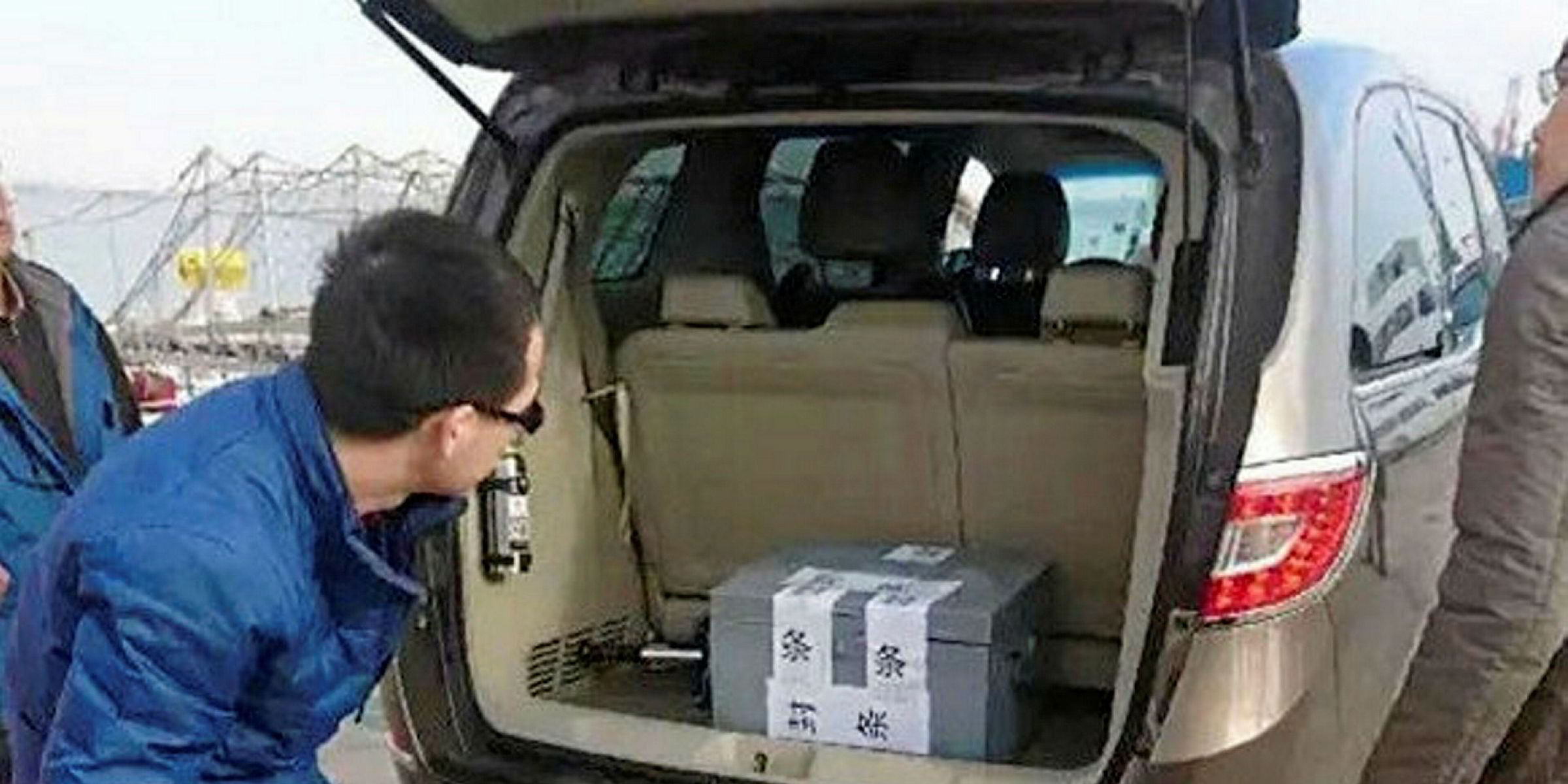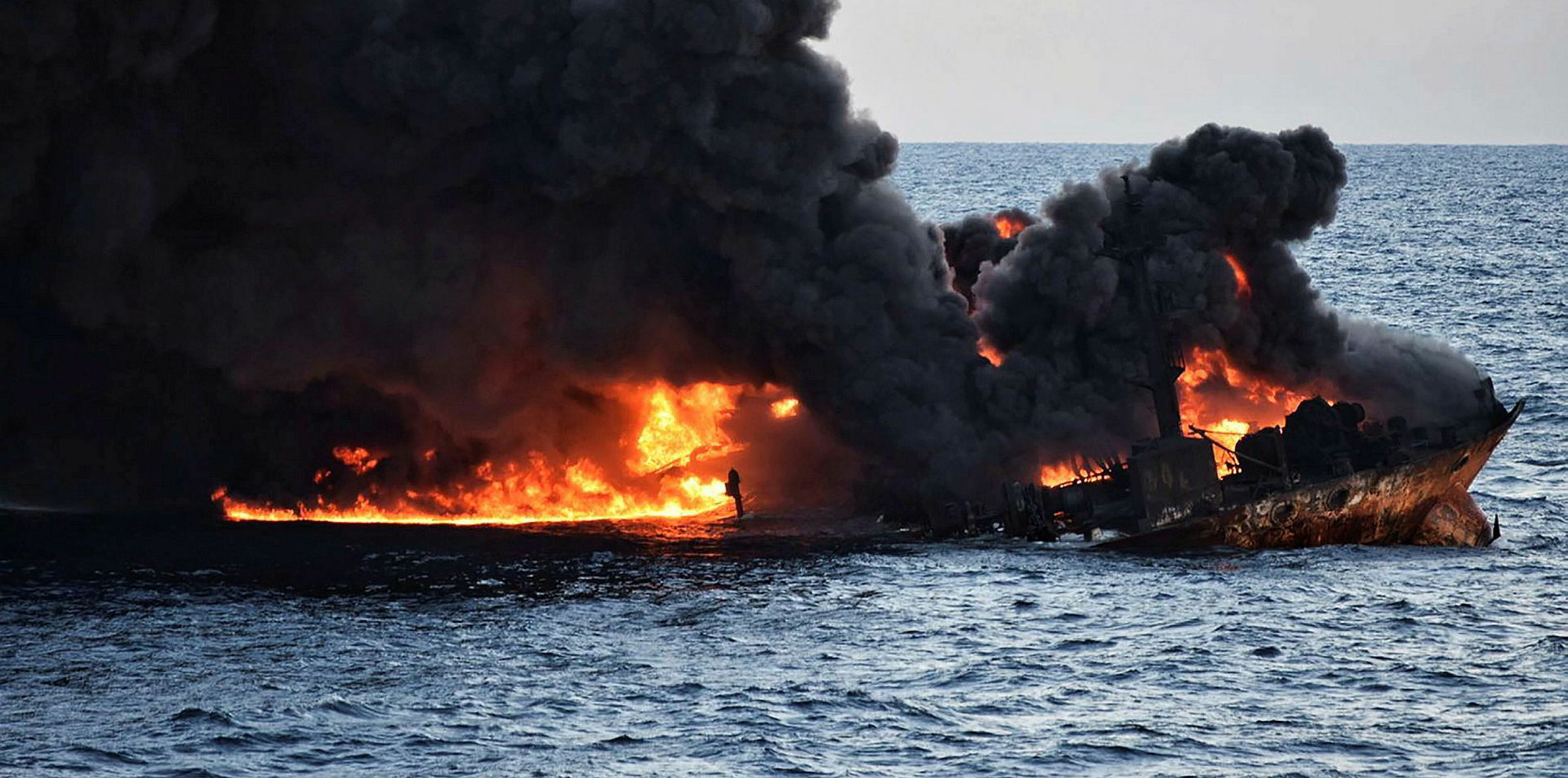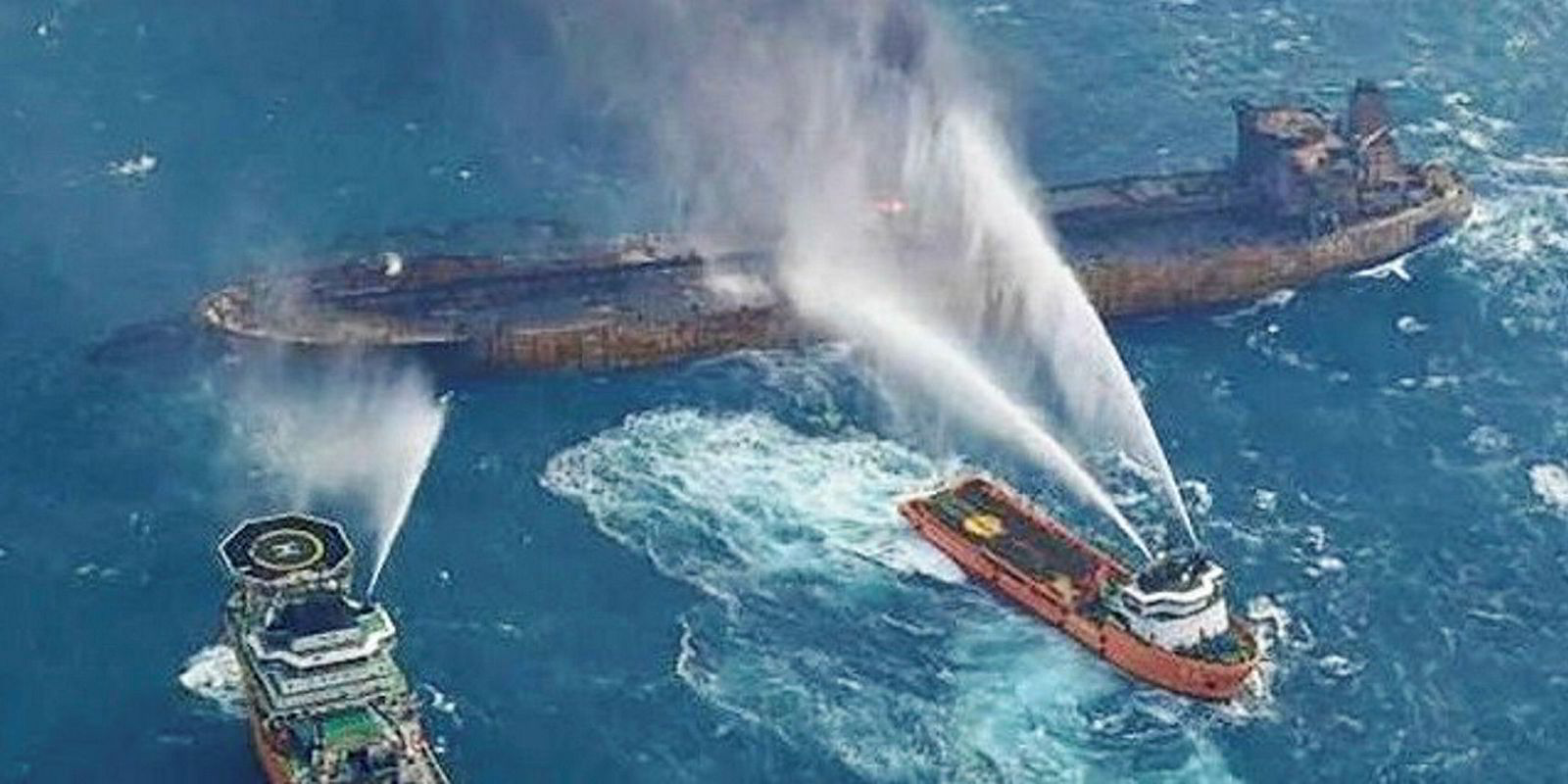Critical evidence from the bulker that collided with the Iranian tanker Sanchi in the East China Sea in January cannot be recovered, creating a blind spot for investigators probing the accident that claimed 32 seafarers’ lives.
While the voyage data recorder (VDR) from the 164,000-dwt, 2008-built tanker that was destroyed remarkably survived, the VDR on the Chinese-registered, 76,000-dwt CF Crystal (built 2011) was overwritten.
Both vessels used pre-2014 VDR systems that have limited capacity and require a crew to back up data or stop a recording once an accident has occurred. But that did not happen on the CF Crystal as the crew abandoned ship in the wake of the collision.
Most significantly, audio recordings of the dialogue between members of the CF Crystal bridge team have been lost.
In their absence, VDR data from two vessels in the area at the time of the collision, the 9,971-teu Maersk Shams (built 2015) and 37,600-dwt TRF Mongstad (built 2016), had to be used to verify the course of both vessels prior to the incident.
“On the CF Crystal, they didn’t stop the VDR,” the joint Chinese Iranian accident report stated. “Neither did they take the VDR when they abandoned the vessel.”
The CF Crystal bridge team’s awareness of the Sanchi in “good visibility” is reliant on testimony taken from the crew in a series of interviews conducted by the Iranian and Chinese investigating authorities that started their probe in Shanghai on 25 January, two weeks after the incident on 6 January.

As TradeWinds has reported, the joint Chinese-Iranian investigation concluded both ships failed to comply with collision prevention regulations (Colregs).
In the joint report, China emphasised the Sanchi’s failure to take avoidance action, as the standby vessel under Colregs; while Iran highlighted the failure of the bridge on the CF Crystal to see the Sanchi right up until the collision.
The collision occurred at 19.50 with the CF Crystal’s bow hitting the Sanchi’s starboard side between the number three and four cargo tanks at an angle of 48 degrees. Yet the level awareness on the bulker’s bridge of its collision course with the Sanchi is unclear, according to the timeline of events established by the probe.
At 19.34, the CF Crystal changed course. Then the X band radar on the Sanchi’s bridge flagged the CF Crystal and a fishing vessel in red, displaying the warning message “AIS [automatic identification system] collision”.
When interviewed, the chief officer on the CF Crystal told investigators he was aware from the AIS signal on his radar that the closest point of approach (CPA) with the Sanchi was at 0.4 nautical miles.
The third officer on the bridge told investigators he thought the Sanchi was “a fishing vessel”.
At 19.45, the third officer took over from the chief officer on the bridge and said he was told “the traffic is clear”. The third officer told investigators: “The chief officer did not tell me the situation with the other vessel.”
At 19.46, the Sanchi recognised the CPA with the CF Crystal was zero and flashed oncoming ships with its Aldis signal lamp, but the third officer on the bridge of the CF Crystal said he did not see any signals. The duty officer and lookout also told investigators he did not see the Sanchi ahead.
But an able seaman on the CF Crystal bridge said that at 19.48, two minutes before the collision, he reminded the third officer that the CPA with the Sanchi was 0.1.
By that time, the Sanchi’s officer of the watch called the ship’s master, who was away from the bridge, to tell him: “We have a target on the starboard side. The CPA is zero. The distance is very short. Captain, it is a very big ship.”
The Sanchi’s third officer calls out: “Oh why is she not doing anything?”
At 19.52, according to the accident investigation, the Sanchi’s audio picks up the sound of “explosion and fire engulfing the bridge and accommodation, followed by suffocation sounds”.




